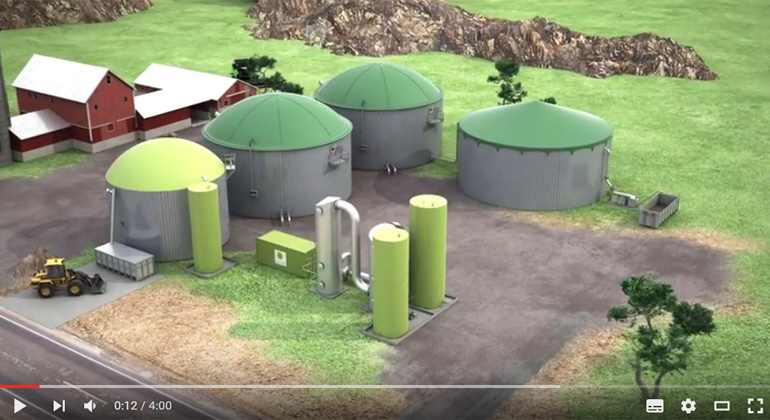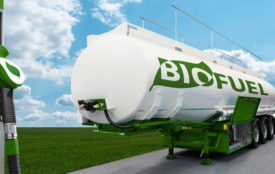Nutrients Can Finally Be Reused!
Almost all organic materials such as manure are good feedstock materials for biogas production.
Some of these contain large quantities of nitrogen, which may actually hamper biogas production by inhibiting the bacteria in charge of breaking down organic material. What if nitrogen could be separated from feedstock BEFORE biogas production? This is now possible, as a new approach using an additional fermentation stage to pre-treat feedstock has been developed in Finland by Ductor.
This process is known as the Ductor fermentation technology, where feedstock is fermented for about five days to convert organic nitrogen into inorganic one, namely ammonia (NH3). Ammonia is then processed out from slurry by stripping it out and storing it in liquid form, which can be used as a raw material for fertilizer production. This approach brings three clear benefits:
- Nitrogen is separated from bulk material, which now becomes a phosphorous fertilizer, and if potassium hydroxide is used as the pH controlling agent, a P & K fertilizer.
- Nitrogen no longer hampers the main biogas process, and thus a higher efficiency can be achieved.
- The removal of nitrogen allows new, high N feedstock materials such as poultry manure.
So, it really is possible to select new methods and approaches, and thus recycle the nutrients in a more efficient way. A great benefit is that additional costs are more than compensated by the benefits brought in as side effects such as improved biogas yield.
For instance, areas such as Kaliningrad or St. Petersburg in Russia would greatly benefit from such investments, not only in terms of valuable production but also in terms of reducing local pollution and especially minimizing the emissions of phosphorous into the Baltic Sea. For instance, there are around 60,000 heads of cattle, 63,000 pigs and 1.5 million heads of poultry (egg and meat chicken) at agricultural enterprises in just the Kaliningrad Region. This stock of farm animals and poultry produces some 1.26 million tonnes of manure per year. This figure will increase to 2.7 million tonnes per year if the long-term future farming development and the planned herd expansion are realized. The approximate amount of manure nitrogen in 2013 was 4,500 tonnes (in perspective, 8,700 tonnes by 2015) and manure phosphorus 1,400 tonnes (2,650 tonnes by 2015). If these emission numbers could be converted to fertilizer production, a major part of nutrients could be recycled.
Our vision is to secure efficient waste management and sustainable food and energy production based on recycling. Our unique portfolio of proprietary and patented technology improves waste management, energy and food production.








